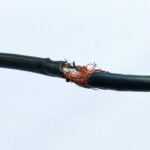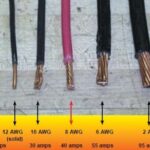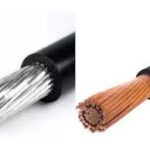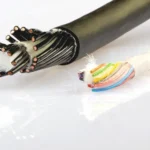If you've ever set up a guitar amp or PA system, chances are you've wondered whether instrument cables and speaker cables are interchangeable. They often look similar, typically using the same 1/4-inch connectors. But using the wrong cable type can damage your gear and compromise sound quality. This guide will help you understand the differences between instrument cables and speaker cables—and why using the right one is crucial.
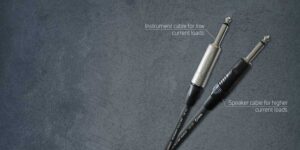
speaker cable vs instrument cable
Quick Comparison Table
| Feature | Instrument Cable | Speaker Cable |
|---|---|---|
| Purpose | Carry low-level audio signals from instruments | Carry high-power signals from amps to speakers |
| Shielding | Shielded to protect weak signals from interference | Unshielded, designed for power transfer |
| Conductors | One conductor + shield (coaxial) | Two conductors (parallel or twisted pair) |
| Typical Wire Gauge | Thinner (22–28 AWG) | Thicker (12–16 AWG) |
| Risk if Misused | Overheating and failure when used for speaker output | Noise and signal loss if used as instrument cable |
What Is an Instrument Cable?
Instrument cables are designed to carry low-voltage audio signals—like the output from a guitar or keyboard—to an amplifier or audio interface. Because these signals are weak and prone to noise, instrument cables include a shielded conductor that blocks electromagnetic interference (EMI) and radio-frequency interference (RFI).
Key Characteristics:
- Coaxial structure (central conductor + insulating layer + braided/shield layer)
- High impedance
- Ideal for passive or active pickups
- Standard connectors: 1/4-inch TS (tip-sleeve)
Common Mistake: Never use an instrument cable to connect an amplifier’s output to a speaker cabinet. Doing so can cause the cable to overheat and fail, potentially damaging the amp.
What Is a Speaker Cable?
Speaker cables are made to carry high-power signals from an amplifier to a speaker. These signals are strong and do not require shielding. Instead, speaker cables use two heavy-gauge conductors to handle the power efficiently.
Key Characteristics:
- Unshielded two-conductor cable
- Low impedance
- Thick wire to reduce resistance
- Standard connectors: 1/4-inch TS, Speakon, banana plugs
Common Mistake: Using a speaker cable as an instrument cable will result in significant hum and interference, as it lacks shielding to protect weak audio signals.
Application Scenarios & FAQs
1. Can I use a guitar cable for a guitar amp speaker? No. You need a speaker cable, not an instrument cable. Guitar amp outputs deliver high current—instrument cables aren’t built for that.
2. Are all 1/4-inch cables the same? No. Both cable types may use 1/4-inch connectors, but the internal construction differs significantly.
3. What happens if I mix them up?
- Instrument cable used as speaker cable: May overheat, melt insulation, damage amp.
- Speaker cable used as instrument cable: Causes hum, buzz, and poor sound quality.
Best Practices
- Label Your Cables: Prevent mix-ups on stage or in the studio.
- Choose the Right Gauge: For speaker cables, use 12–16 AWG depending on the power and length.
- Invest in Quality: Don’t skimp on cables—they’re critical to sound and equipment safety.
Conclusion: Use the Right Tool for the Job
Instrument and speaker cables are not interchangeable. Despite their similar appearance, their electrical and structural differences are vital. Always use shielded instrument cables for guitars, keyboards, or microphones, and heavy-gauge speaker cables for connecting amps to speakers. Your tone—and your gear—depend on it.
Looking to upgrade your cables? Browse our selection of premium instrument and speaker cables designed for durability, clarity, and safety. [Contact us] to find the right cable for your setup.

